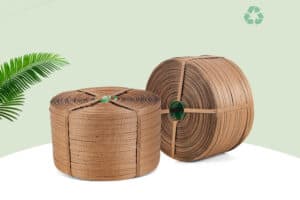In today’s world, where environmental issues are of paramount importance, choosing eco-friendly void fill packaging materials has become a necessity for businesses. As consumers become more aware of the ecological impact of the products they buy, it is critical for companies to make sustainable choices. This article guides you through the process of selecting environmentally friendly void fill packaging materials, enabling you to align your business practices with sustainability goals.
1. Consider recycled materials
One of the main factors to consider when choosing a packaging material is its recycling potential. Look for materials that are easy to recycle, such as cardboard, paper, and glass. These materials have the advantage of being renewable and have a lower environmental impact than non-recyclable alternatives such as plastic. Supporting the recycling industry can boost the circular economy while reducing the amount of waste that ends up in landfill.
2. Prioritize biodegradable materials
Choosing biodegradable packaging materials is another step towards a greener future. Biodegradable materials such as plant-based plastics, sugarcane-based packaging and even mushroom-based packaging can break down naturally, reducing the pollution caused by traditional packaging materials. By choosing biodegradable packaging, you can help mitigate the long-term impact of packaging waste on the environment.
3. Choose renewable resources
Sourcing materials from renewable resources further contributes to eco-friendly packaging solutions. Materials such as bamboo, hemp or cornstarch are great alternatives to traditional packaging. These resources are rapidly renewable and require less energy and water to produce, reducing the overall carbon footprint associated with their manufacturing process.
4. Look for a minimalist packaging design
Choosing packaging materials that require fewer resources and generate less waste is critical for eco-conscious businesses. Minimalist packaging design prioritizes simplicity and uses as little material as possible without compromising product safety. By adopting minimalist packaging, businesses can reduce waste, ship more product efficiently, and minimize their environmental impact.
5. Consider energy-efficient packaging
In addition to the materials used, it is also important to consider the energy required for manufacturing and shipping. Energy-efficient packaging materials, such as those that require less energy to produce, can significantly reduce carbon emissions. Additionally, lighter packaging materials can reduce shipping costs and fuel consumption, making them an environmentally friendly choice.
6. Explore Alternative Packaging Options
Innovative packaging options can provide sustainable alternatives to traditional packaging materials. For example, edible packaging made from seaweed or compostable bags made from biomaterials are emerging alternatives that help reduce waste and offer unique branding opportunities. Exploring and adopting these alternative packaging solutions can differentiate your business while minimizing your environmental impact.
Conclusion
Choosing environmentally friendly packaging materials is no longer just a trend, but a responsible business practice. By choosing recyclable, biodegradable and renewable packaging materials, employing minimalist packaging designs, considering energy-efficient options, and exploring alternative packaging options, businesses pave the way for sustainable operations. The impact of these choices goes beyond reducing carbon footprints; it can also improve brand reputation, attract eco-conscious consumers, and create a greener future for future generations. So choose wisely and let your packaging be a symbol of your commitment to the environment.



